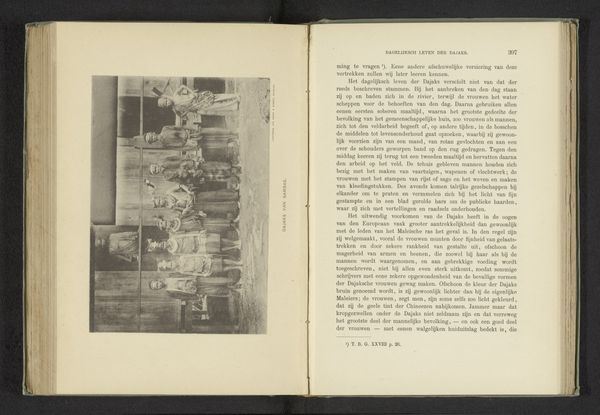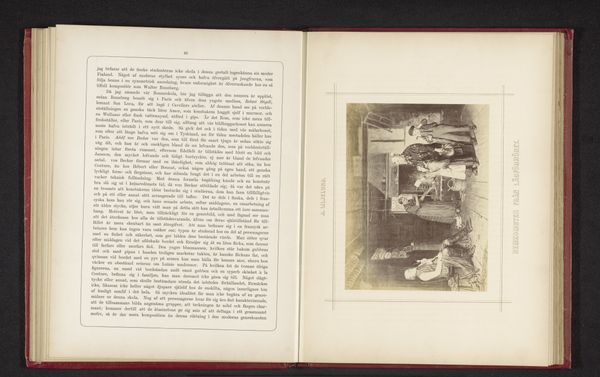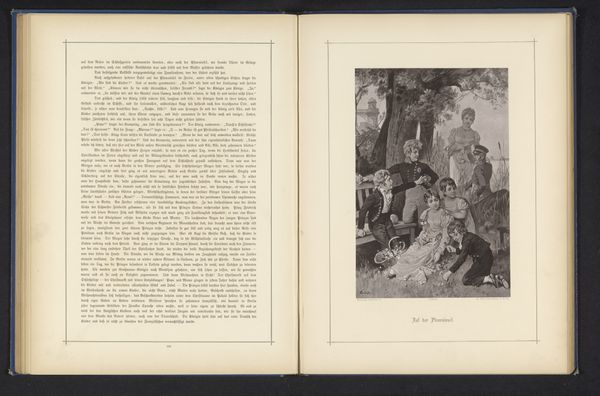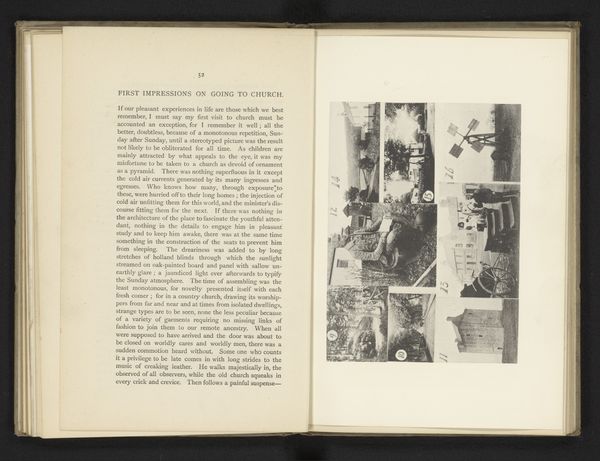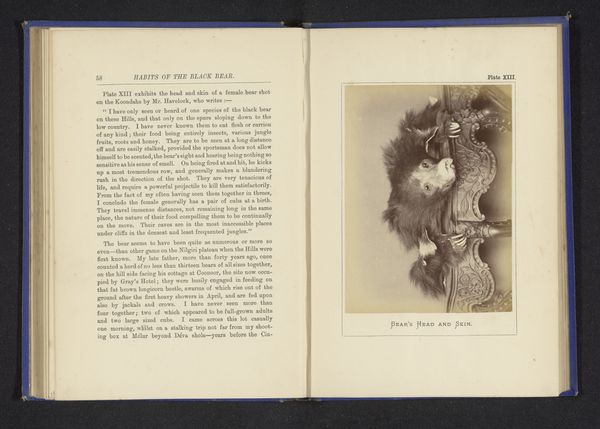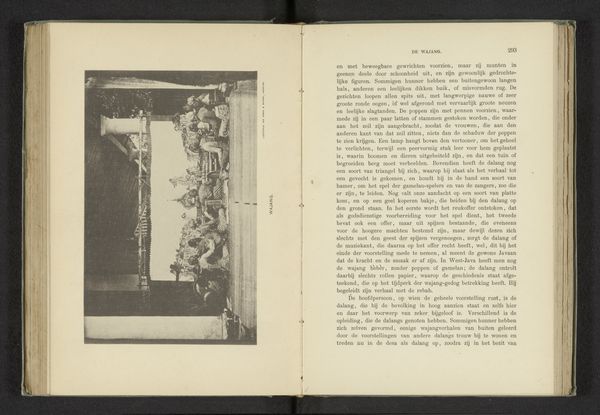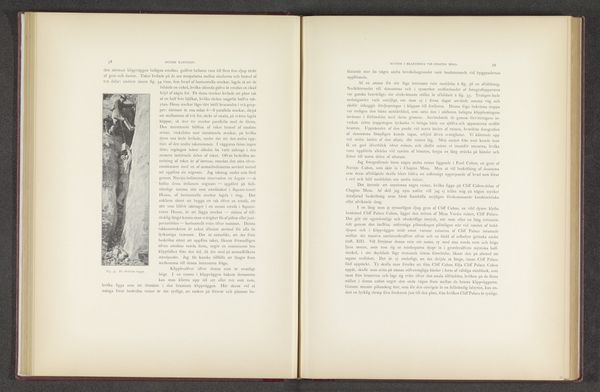
Fotoreproductie van een schilderij voorstellende Louise van Mecklenburg-Strelitz in een koets tijdens haar trouwoptocht in Berlijn met meisjes ervoor before 1883
0:00
0:00
Dimensions: height 219 mm, width 163 mm
Copyright: Rijks Museum: Open Domain
Curator: Ah, this print holds a certain nostalgic charm, doesn't it? It's called "Fotoreproductie van een schilderij voorstellende Louise van Mecklenburg-Strelitz in een koets tijdens haar trouwoptocht in Berlijn met meisjes ervoor," or roughly, "Photographic reproduction of a painting depicting Louise of Mecklenburg-Strelitz in a carriage during her wedding procession in Berlin with girls in front." Dating back to before 1883, we believe it's an anonymous lithograph. Editor: Immediately, I feel like I've stepped back in time, and into some kind of grand fairy tale. It is a world of ornate coaches, pretty girls, and hopeful fantasies, all wrapped up in a romantic vision of the past. It reminds me how powerful images of royal spectacle are. Curator: Absolutely. This image speaks volumes about the staging of power and celebration. The wedding procession, captured and reproduced, becomes a piece of political theater for the masses. Disseminated via lithography, it allowed the monarchy to engage in some visual communication, a feat for its time. Editor: And isn't it also about the *idea* of royalty, almost more than the real thing? The perfectly poised bride, the idealized purity of the young girls – it’s a constructed fantasy. There's such meticulous attention to detail in the reproduction. Curator: Exactly, the artist meticulously recreated a vision of the event. Notice how this method transforms an actual moment into an easily reproducible scene. Editor: And in doing so, they flattened something vibrant into these hard lithographic lines. You gain some detail in the medium, but you lose dynamism, I think. There’s an inherent contradiction, where the intent may have been to create spectacle, but the process becomes flattening and reproducible, accessible. Curator: It prompts the questions of access, certainly, and how visual media were starting to play a role in constructing public persona. Think about the stories such imagery helped circulate! Editor: And it makes me wonder about the girls themselves, the un-named group pictured in front. Did they grasp the weight and performativity of this grand political display, I wonder. The answer, I suspect, is certainly not! Curator: Well, thinking about this piece, I'm drawn to consider its implications for images today. How does it remind us that the staged images in political spectacle are always curated and meant for distribution? Editor: Yes! A wonderful piece with a dark lesson.
Comments
No comments
Be the first to comment and join the conversation on the ultimate creative platform.

